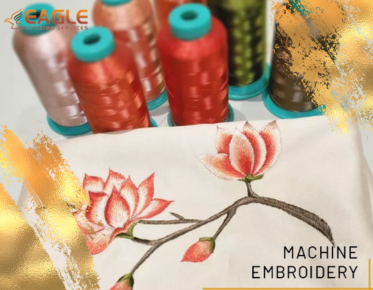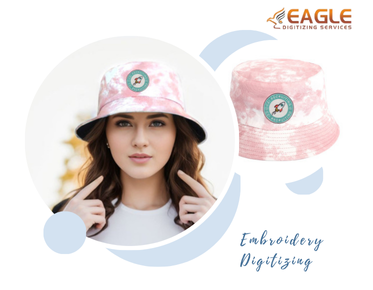How to Digitize a Color Photo for Embroidery
Embroidery digitizing is a fascinating process that transforms a simple color photo into a beautiful embroidered piece. This process involves converting the photo into a digital format that an embroidery machine can read. With the right tools and techniques, you can create stunning embroidery designs from your favorite photos. In this guide, we will explore the steps involved in digitizing a color photo for embroidery, ensuring that you achieve the best results possible.
Understanding the Basics of Embroidery Digitizing
Before diving into the digitizing process, it's essential to understand what embroidery digitizing entails. Essentially, it is the process of converting artwork into a stitch file that can be read by an embroidery machine. This involves using specialized software to trace the artwork with stitches, turning it into a format that the machine can interpret. Companies like Eagle Digitizing offer professional embroidery digitizing services that can handle various designs, from logos to complex artwork.
Preparing Your Photo for Digitizing
The first step in digitizing a color photo is to prepare the image. This involves selecting a high-quality photo with clear details and color separations. The quality of the original image significantly impacts the final embroidered product. It's advisable to use images with distinct outlines and contrasts to ensure that the embroidery machine can accurately replicate the design.
Choosing the Right Software
Once your photo is ready, the next step is to choose the right embroidery digitizing software. There are various software options available, each with its unique features and capabilities. Some popular choices include Wilcom, Hatch, and Brother PE-Design. These programs allow you to import your photo and convert it into a stitch file. They offer tools for adjusting stitch types, densities, and directions to achieve the desired effect.
Digitizing the Photo
With your software set up, you can begin the digitizing process. Start by importing your photo into the software. Use the tracing tools to outline the main elements of the image. This step involves defining the stitch paths and selecting the appropriate stitch types for different areas of the design. For instance, you might use satin stitches for outlines and fill stitches for larger areas.
Adjusting Colors and Stitch Types
Color plays a crucial role in embroidery, and it's essential to match the thread colors to the original photo as closely as possible. Most digitizing software allows you to select thread colors from a vast palette, ensuring that your embroidery design is vibrant and true to the original image. Additionally, you can adjust the stitch types and densities to enhance the texture and depth of the embroidery.
Testing and Finalizing the Design
After digitizing the photo, it's crucial to test the design before proceeding to the final embroidery. This involves running a test stitch on a sample fabric to ensure that the design sews out correctly. Companies like Eagle Digitizing offer a service where they test sew each design and make necessary revisions to ensure it runs perfectly on your machine. This step is vital to identify any issues with the stitch paths or thread tensions.
Saving and Exporting the Design
Once you are satisfied with the test stitch, you can save and export the design in the appropriate file format for your embroidery machine. Different machines require specific file formats, such as DST, PES, or EXP. Ensure that you select the correct format to avoid compatibility issues. Eagle Digitizing can convert designs into various formats, making it easier for you to use the design on any machine.
Embroidery Digitizing Services
If you find the digitizing process challenging or time-consuming, you can opt for professional embroidery digitizing services. These services offer expertise and experience in converting photos into high-quality embroidery designs. They handle everything from color matching to stitch path optimization, ensuring that your design is flawless and ready for embroidery.
Exploring the Future of Embroidery Digitizing
As technology advances, the field of embroidery digitizing continues to evolve. New software features and machine capabilities are making it easier to create intricate and detailed designs. In the future, we can expect even more sophisticated tools that allow for greater creativity and precision in embroidery. Whether you're a hobbyist or a professional, staying updated with the latest trends and techniques in embroidery digitizing can help you create stunning designs that stand out.



